Legendary Furies – Angry And Monstrous Women Of The Underworld
A. Sutherland - AncientPages.com - In Greek mythology, the Erinyes (also known as Furies) were three goddesses of revenge and retribution. The women resided in the underground world and were considered monstrous and evil.
Departing of Furies. Image credit: The Baldwin Project
These three sisters were called Alecto ("the angry"), Megaera ("the grudging"), and Tisiphone ("the avenger").
How the Furies were created remains unclear. According to one legend, they came from the blood of the Titan Uranus, when his son Cronus castrated him to take revenge for the loss of his siblings.
According to another legend, the Furies were Nyx's daughters, the night's symbolization, and a daughter of Chaos.
The "infernal goddesses" correspond to the Dirae in Roman mythology, and some suppose that they are called Furies in hell, Harpies on earth, and Dirae in heaven.
 Orestes at Delphi, flanked by Athena and Pylades, among the Erinyes and priestesses of the oracle. Paestan red-figure bell-krater, c. 330 BC. Python (as painter) - Jastrow (2006) - Public Domain
Orestes at Delphi, flanked by Athena and Pylades, among the Erinyes and priestesses of the oracle. Paestan red-figure bell-krater, c. 330 BC. Python (as painter) - Jastrow (2006) - Public Domain
Their appearance was remarkable and hideous. They had snakes for hair, dogs' heads, coal-black bodies, and bat wings. They had burning breath, and poisonous blood was dripping from their eyes. In their hands, they carry brass-studded scourges, and their victims die in torment.
The role of the Furies was to persecute crimes such as disrespect, injustice, perjury, arrogance, and, first and foremost- murder, especially the murder inside a family. The Furies were regarded as very evil because their lust for punishment knew no bounds, for they kept punishing a sinner even after his death until he finally showed remorse.
One of the most frequently repeated examples of ancient Greek literature featuring the Erinyes is found in examples that focus on the Orestes myth.
Orestes belonged to the third generation of the House of Atreus and was the last to suffer the curse of the Erinys, which plagued his house. As the story goes, Atreus and his brother Thyestes were rivals for the throne of Mycenae.
The Remorse of Orestes, where he is surrounded by the Erinyes. Image credit: William-Adolphe Bouguereau, 1862; Chrysler Museum of Art, Norfolk, Virginia
When Atreus won the throne, Thyestes conspired against him, seducing his wife to gain possession of a golden ram that would win him the kingdom.
But his sons, Agamemnon and Menelaus, drove him from the throne.
Atreus, however, returned from exile and regained his throne, expelling Thyestes. But, desiring a harsher penalty, he invited his brother back, murdered his two sons, and served them up before him as a meal. Later, Thyestes' son Aigisthos avenged this crime with the murder of Atreus.
When Agamemnon was away fighting the Trojan War, Aigisthos returned, seduced Agamemnon's queen Klytaimestra and conspired with her to murder the king upon his return. A curse fell upon the guilty pair, and his father's Erinys compelled the young Orestes to exact his vengeance.
Orestes himself was afterward plagued by the Erinys of his mother Klytaimestra for the crime of matricide until he was purified of the blood guilt by Apollo.
Erinyes are also Furies because their name in Greek mythology means "the angry ones."
Written by – A. Sutherland - AncientPages.com Senior Staff Writer
Updated on October 29, 2022
Copyright © AncientPages.com All rights reserved. This material may not be published, broadcast, rewritten or redistributed in whole or part without the express written permission of AncientPages.com
More From Ancient Pages
-
 The Norimitsu Odachi – Giant Japanese Sword Remains An Enigma
Artifacts | Mar 22, 2019
The Norimitsu Odachi – Giant Japanese Sword Remains An Enigma
Artifacts | Mar 22, 2019 -
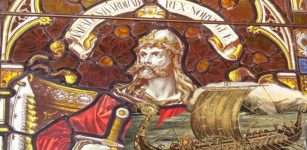 On This Day In History: The Battle Of Fulford – King Hardrada Against Saxon Troops – Was Fought – On Sep 20, 1066
News | Sep 20, 2016
On This Day In History: The Battle Of Fulford – King Hardrada Against Saxon Troops – Was Fought – On Sep 20, 1066
News | Sep 20, 2016 -
 Paleoindian Ochre Mine Found In Submerged Caves In Mexico’s Yucatan Peninsula
Archaeology | Jul 6, 2020
Paleoindian Ochre Mine Found In Submerged Caves In Mexico’s Yucatan Peninsula
Archaeology | Jul 6, 2020 -
 The Green Knight – New Movie Based On Arthurian Legend
Myths & Legends | Aug 7, 2021
The Green Knight – New Movie Based On Arthurian Legend
Myths & Legends | Aug 7, 2021 -
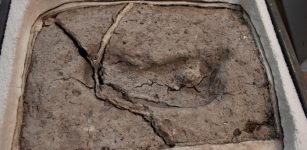 Discovery Of Oldest Human Footprint In The Americas Can Re-Write History
Archaeology | Apr 30, 2019
Discovery Of Oldest Human Footprint In The Americas Can Re-Write History
Archaeology | Apr 30, 2019 -
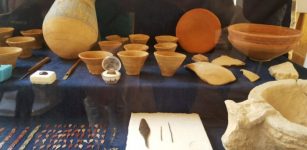 New Discoveries In the Valley Of The Monkeys In Luxor, Egypt
Archaeology | Oct 11, 2019
New Discoveries In the Valley Of The Monkeys In Luxor, Egypt
Archaeology | Oct 11, 2019 -
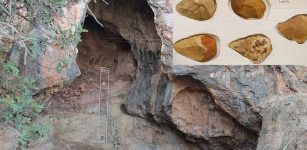 Oldest-Known Grinding Tool Used 350,000 Years Ago Was Found In Tabun Cave, Israel
Archaeology | Jan 4, 2021
Oldest-Known Grinding Tool Used 350,000 Years Ago Was Found In Tabun Cave, Israel
Archaeology | Jan 4, 2021 -
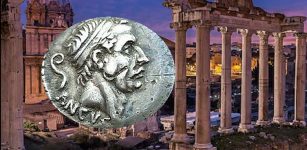 Ancus Marcius: Semi-Legendary Fourth King Of Rome Obliged To Make War To Defend And Expend Territories
Featured Stories | Jul 12, 2019
Ancus Marcius: Semi-Legendary Fourth King Of Rome Obliged To Make War To Defend And Expend Territories
Featured Stories | Jul 12, 2019 -
 Viking King – How Was He Elected And What Was Expected From Him?
Ancient History Facts | Apr 12, 2023
Viking King – How Was He Elected And What Was Expected From Him?
Ancient History Facts | Apr 12, 2023 -
 Hidden Prophecies Inside The Great Pyramid Of Giza Discovered By Scientists
Featured Stories | Jun 21, 2017
Hidden Prophecies Inside The Great Pyramid Of Giza Discovered By Scientists
Featured Stories | Jun 21, 2017 -
 Ancient People In Tasmania Witnessed Stunning Auroras When The Earth’s Magnetic Field Flipped
News | Feb 19, 2021
Ancient People In Tasmania Witnessed Stunning Auroras When The Earth’s Magnetic Field Flipped
News | Feb 19, 2021 -
 On This Day In History: Battle Of Vincennes, Indiana – On Feb 24-25, 1779
News | Feb 24, 2017
On This Day In History: Battle Of Vincennes, Indiana – On Feb 24-25, 1779
News | Feb 24, 2017 -
 Jure Grando – First ‘Real’ Historical Vampire Case Documented
Featured Stories | Jun 16, 2021
Jure Grando – First ‘Real’ Historical Vampire Case Documented
Featured Stories | Jun 16, 2021 -
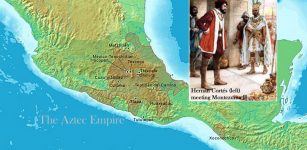 Aztec Empire: ‘Tlatoani’ – The Ruler With The Ultimate Power In The Land
Ancient History Facts | May 5, 2016
Aztec Empire: ‘Tlatoani’ – The Ruler With The Ultimate Power In The Land
Ancient History Facts | May 5, 2016 -
 Egyptian Necropolis Of Asyut And Funerary Culture That Dates Back To Old Kingdom
Archaeology | Feb 24, 2020
Egyptian Necropolis Of Asyut And Funerary Culture That Dates Back To Old Kingdom
Archaeology | Feb 24, 2020 -
 Ancient European Buildings Form A Sacred Symbol When Viewed From The Air – Scientist Reveals
Ancient Symbols | Jun 15, 2018
Ancient European Buildings Form A Sacred Symbol When Viewed From The Air – Scientist Reveals
Ancient Symbols | Jun 15, 2018 -
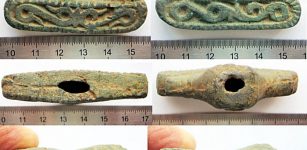 Fragments Of 100 Viking Swords Unearthed In North Estonia – Largest Find To Date
Archaeology | Oct 6, 2019
Fragments Of 100 Viking Swords Unearthed In North Estonia – Largest Find To Date
Archaeology | Oct 6, 2019 -
 When And Why Did Humans Start Using Tombstones?
Archaeology | Aug 29, 2022
When And Why Did Humans Start Using Tombstones?
Archaeology | Aug 29, 2022 -
 Ancient Secrets Of Dougong Brackets: How 2,500-Year-Old Buildings Could Survive Earthquakes
Ancient History Facts | Jul 31, 2017
Ancient Secrets Of Dougong Brackets: How 2,500-Year-Old Buildings Could Survive Earthquakes
Ancient History Facts | Jul 31, 2017 -
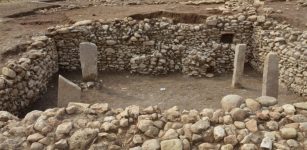 Temples At Boncuklu Tarla Are Older Than Göbekli Tepe And Re-Write Ancient History
Archaeology | Dec 10, 2019
Temples At Boncuklu Tarla Are Older Than Göbekli Tepe And Re-Write Ancient History
Archaeology | Dec 10, 2019


